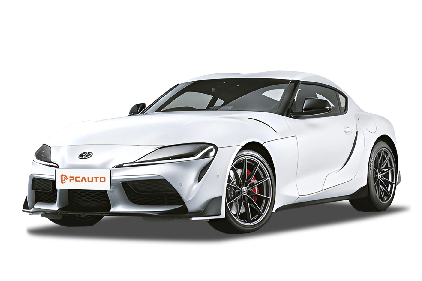Q
how much is a toyota supra
In Malaysia, the Toyota Supra's pricing varies depending on the trim and specs, with brand-new models typically ranging from around RM 600,000 to RM 700,000. The final figure can shift based on optional extras you tick and any dealer promotions on offer.
As Toyota's iconic sports car, the Supra packs a 3.0-liter inline-six turbocharged engine churning out 340 horsepower, paired with an 8-speed auto gearbox that delivers a seriously engaging drive. What really wins over enthusiasts is its sharp handling and sporty design—plus, sharing a platform with the BMW Z4 means it nails that mix of high performance and premium feel.
In the Malaysian market, the Supra sits in the niche high-performance category, perfect for drivers who crave pure driving fun. But remember, owning one isn't just about the sticker price—you'll need to factor in insurance, road tax, and maintenance costs to get the full picture of what it'll set you back long-term.
If the Supra's caught your eye, do yourself a favor and head to your nearest Toyota dealership for a test drive. While you're there, check out their latest deals too—you’ll be in a much better position to make a smart call on whether this sports car’s the right fit for you.
Special Disclaimer: This content is published by users and does not represent the views or position of PCauto.
Popular Cars
Model Year
Car Compare
Car Photo
Latest Q&A
Q
How do engines get power?
The power of a car engine comes from converting the heat energy generated by fuel combustion into mechanical energy. Here’s how it works: Air mixes with fuel, gets drawn into the cylinders, and the piston compresses the mixture. Then, the spark plug ignites it, and the resulting explosion forces the piston downward—turning the crankshaft via the connecting rod to deliver power. This four-stroke cycle includes intake, compression, power, and exhaust phases.
Modern engines often use tech like turbocharging or direct injection to boost efficiency. For example, a turbocharger uses exhaust gases to spin a turbine, cramming more air into the cylinders—letting smaller engines deliver big power. The transmission then converts crankshaft speed into the right torque for the wheels.
Worth noting: Different fuel grades affect combustion efficiency, and regular oil/air filter changes keep the engine running smoothly. Hybrid systems add an electric motor to save even more fuel. Plus, many new cars now feature auto start-stop to cut unnecessary idling.
Q
What is engine power kW?
The kilowatt (kW) is the universal standard for measuring an engine's power output. Roughly 1 kW equals 1.34 horsepower—it tells you how much mechanical work the engine can deliver per second, directly impacting acceleration and top speed. Generally, more kilowatts mean stronger performance, but real-world driving also depends on torque, transmission tuning, and vehicle weight.
When shopping for a car, don’t just focus on peak power numbers—check the power curve too. Some engines prioritize low-end punch for city driving, while others excel at high-rev power for highway cruising. With hybrids and EVs becoming mainstream, instant electric torque means even modest kW ratings can deliver thrilling acceleration.
Turbocharging has also leveled the playing field: smaller engines now rival bigger ones in power but with better fuel efficiency. My advice? Test-drive thoroughly. Feel how the power builds across the rev range to find a match for your driving style.
Q
How do I find my engine power?
To check engine performance specs, your best bet is the technical data section in the owner's manual - it'll clearly list max horsepower (PS or hp) and torque (Nm). If you've misplaced the manual, peek at the engine bay's ID plate; some models stamp the power figures there. Alternatively, use the VIN under the steering wheel to request full specs from an authorized service center.
Most modern rides have a "vehicle info" menu in the infotainment system that shows real-time power metrics. Keep in mind, actual output can dip due to fuel quality, altitude, or maintenance neglect. A clogged air filter alone can sap 10-15% of power.
Pro tip for humid climates: Regularly inspect the cooling system and turbocharger (if equipped). Heat soak becomes a real buzzkill in tropical weather. Also, expect 15-20% drivetrain loss - that's why wheel horsepower always reads lower than the factory crank rating.
For precise numbers, hit up a tuning shop with chassis dyno equipment. Just remember: go too wild with mods, and you might kiss your warranty goodbye.
Q
What does it mean when my car says engine power?
When your dashboard shows "engine power" or "engine power reduced," it usually means the vehicle's engine management system has detected an issue and is limiting performance to prevent further damage. This can happen for several reasons—faulty sensors (like an O2 sensor or throttle position sensor), turbocharger problems, low fuel pressure, or incorrect signals sent to the ECU. While the car may still drive, you’ll notice a significant drop in power. Get it checked ASAP to avoid bigger headaches down the road.
Regular maintenance helps prevent this: swap dirty air filters and worn spark plugs, and always use the right fuel grade. If a warning light pops up, an OBD-II scanner can pull trouble codes to help your mechanic pinpoint the issue.
Fun fact: Modern cars are hyper-sensitive. Sometimes a temporary voltage hiccup can trigger these warnings. If the message disappears after restarting and everything feels normal, don’t sweat it—just keep an eye out for any weird behavior.
Q
Is engine size horsepower?
Engine size (displacement) and horsepower are related but distinct concepts. Displacement, measured in liters (L) or cubic centimeters (cc), refers to the total volume of all cylinders in an engine. Horsepower, on the other hand, quantifies an engine’s power output—essentially how efficiently it performs work.
While larger engines often produce more horsepower, that’s not always the case. Factors like turbocharging, fuel injection systems, and valve timing play a huge role. For example, a small turbocharged engine can match or even surpass the horsepower of a bigger naturally aspirated engine thanks to forced induction.
Brand philosophy also matters. A fuel-efficient model might dial back horsepower for better mileage, while a performance-oriented car will squeeze out every last pony with tuned intake/exhaust systems or higher compression ratios. So when shopping for a car, don’t judge power by displacement alone—dig into the specs and think about how you actually drive.
View MoreRelated News

Toyota Supra (A90) will be discontinued next March, and the next generation model may be led by Toyota.
JohnNov 14, 2025

Will the Toyota Yaris Cross come to Malaysia? If it comes, how much will it sell for?
JamesDec 19, 2025

2026 Toyota HiLux receives five-star ANCAP safety rating in ANCAP
MichaelDec 12, 2025

2026 Toyota bZ4X features a larger battery and longer range but needs to be sold at a lower price
WilliamDec 12, 2025

Toyota introduces Wolfspeed SiC power semiconductors, considering their durability to be better
JohnDec 11, 2025
View More








Pros
Cons